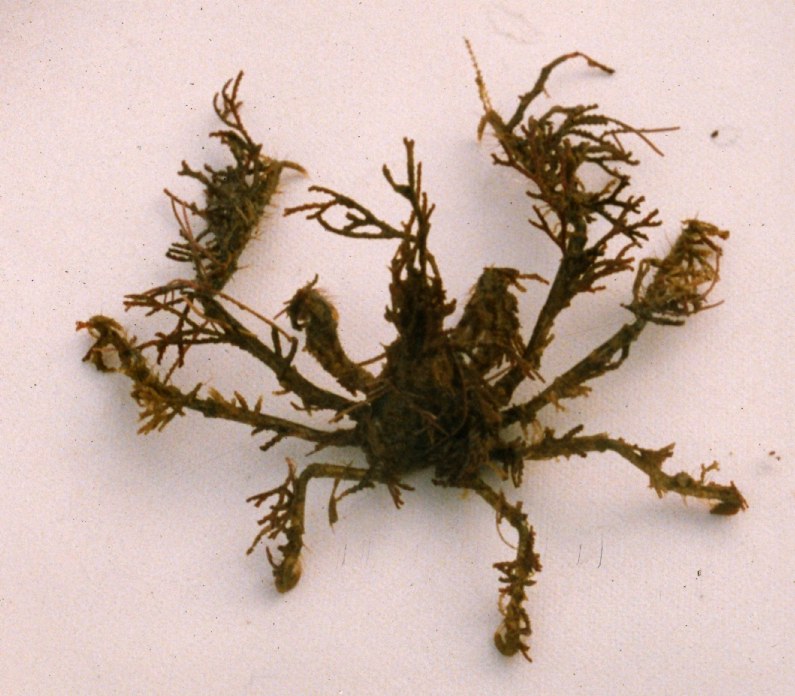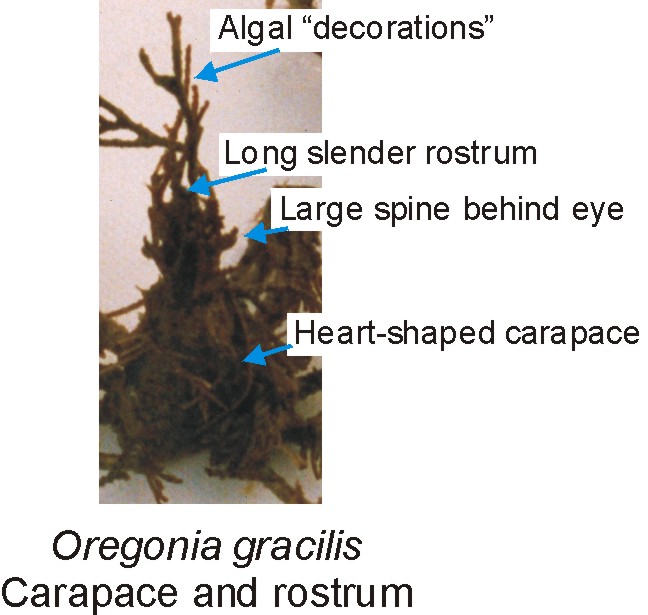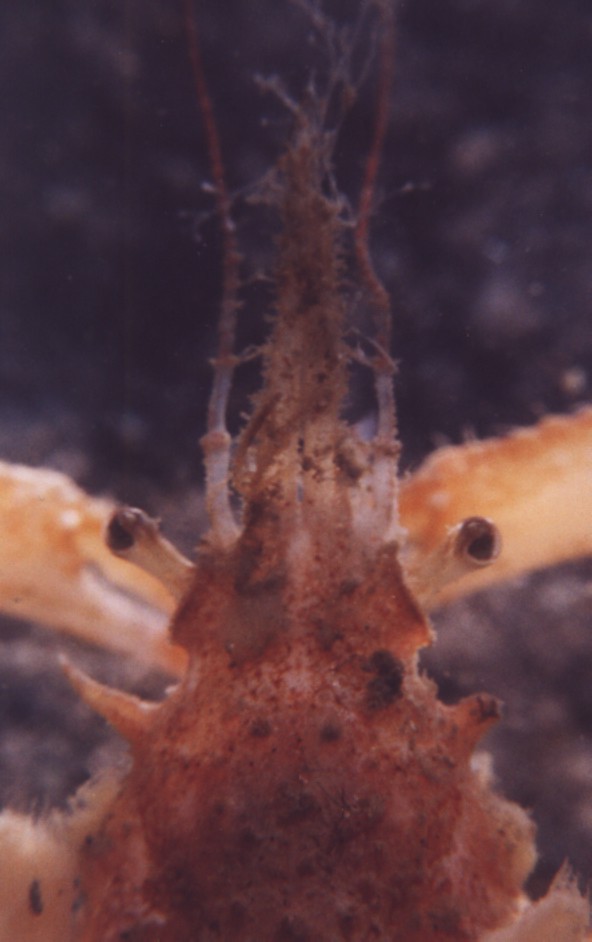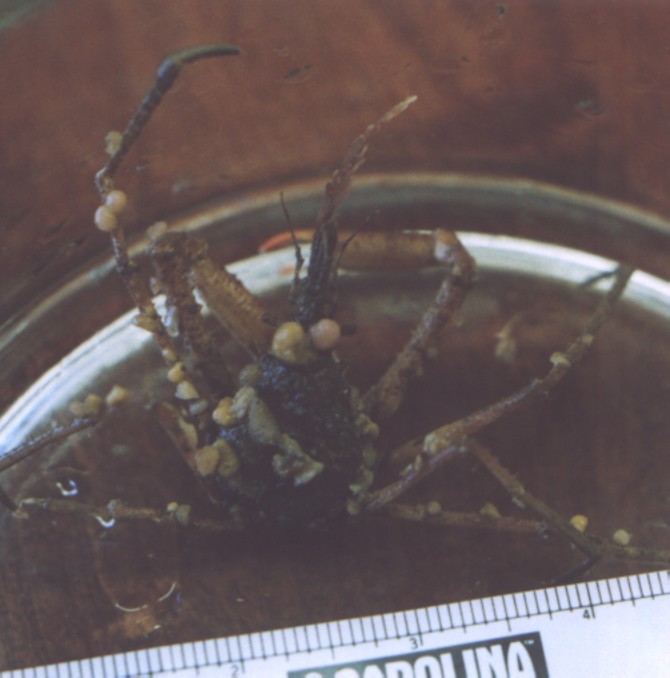Oregonia gracilis Dana, 1851Common name(s): Graceful decorator crab |
|
| Synonyms:
Oregonia hirta Oregonia longimana |
 |
| Phylum Arthropoda
Subphylum Crustacea Class Malacostraca Subclass Eumalacostraca Superorder Eucarida Order Decapoda Suborder Pleocyemata Infraorder Brachyura (true crabs) Family Majidae |
|
| Oregonia gracilis, Two Harbors, CA. Carapace 3 cm long. | |
| (Photo by: Dave Cowles May 1997) | |
How to Distinguish from Similar Species: This is the only decorator crab with the long hooked spine behind the eye. The carapace does not have a sharp anterolateral projection as seen in Pugettia producta.
Geographical Range: Bering sea to Monterey, CA; Japan
Depth Range: Intertidal to 436 m deep
Habitat: Most abundant on mixed composition bottoms
Biology/Natural History: This crab decorates more liberally than any of the other decorator crabs in this area. During decoration, pieces of material are attached to specialized hooked setae and also interact with pappose setae. The crab's chelae are small and delicate. In males the chelipeds are longer than the walking legs, but in females they are shorter. Will eat carrion. Predators include Pacific halibut (Hippoglossus stenolepis). In Puget Sound area, eggs may be carried during most seasons. Recently hatched eggs are orange-red; eggs nearly ready to hatch are reddish-brown.
While the large majority and abundant species of true (Brachyuran) crabs walk sideways, members of genus Oregonia walk forward. In a 2025 preprint, Taniguchi et al. speculate that the sideways walking in so many true crab species is is because walking sideways allows for rapid escape locomotion options in two directions, providing a selective advantage.
| Return to: | |||
| Main Page | Alphabetic Index | Systematic Index | Glossary |
References:
Dichotomous Keys:Coffin, 1952
Flora and Fairbanks, 1966
Hart, 1982
Kozloff 1987, 1996
Smith and Carlton, 1975
Wicksten, 2009
General References:
Jensen,
1995
Scientific Articles:
Berke, Sarah K. and Sarah A. Woodin, 2009. Behavioral and
morphological
aspects of decorating in Oregonia gracilis
(Brachyura Majoidea).
Invertebrate Biology 128:2 pp 172-181
Burnett, Nicole, 2024: A practical identification guide to the zoeae of the invasive European green crab, Carcinus maenas
(Linnaeus, 1758) (Decapoda: Brachyura: Carcinidae), and to the zoeae of
the families of brachyuran crabs in Washington state, USA. Journal of
Crustacean Biology 44:4. doi.org/10.1093/jcbiol/ruae064
Taniguchi, Cunya, Tsubasa Inoue, Kano Kohara, Jung-Fu Huang, Atsushi Hirai, Nobuaki Mizumoto, Fumio Takeshita, and Yuuki Kawabata, 2025. Evolution of Sideways locomotion in crabs (Preprint). doi:
General Notes and Observations: Locations, abundances, unusual behaviors:

Note large spine behind the eye on this close-up.

Another view of Oregonia gracilis rostrum. Note the postorbital spines. Photo by Dave Cowles, July 2000

This Oregonia gracilis is festooned with hydroids
and (tunicates?).
From 100 m depth, San Juan Channel. Photo by Dave Cowles,
July 2001

Here is the underside of another individual. Note the long,
thin
legs and chelipeds, and the long hydroid attached to the
rostrum.
Photo by Dave Cowles, July 2005
Authors and Editors of Page:
Dave Cowles (2005): Created original page